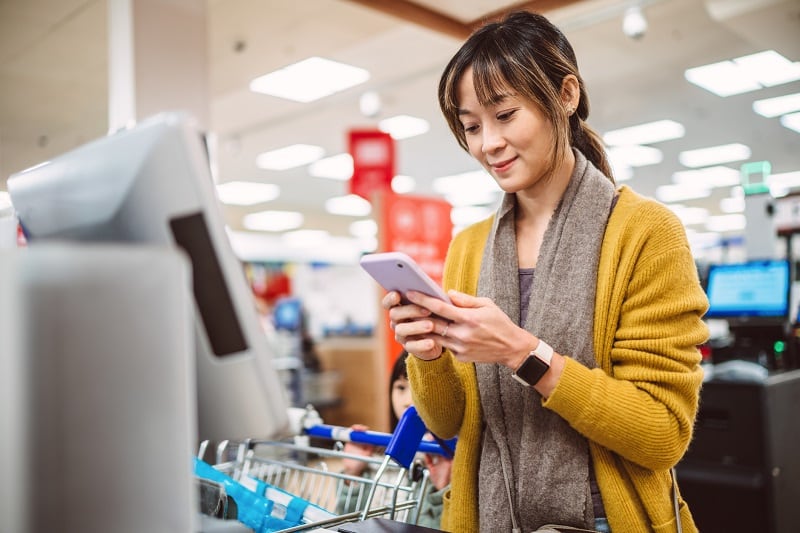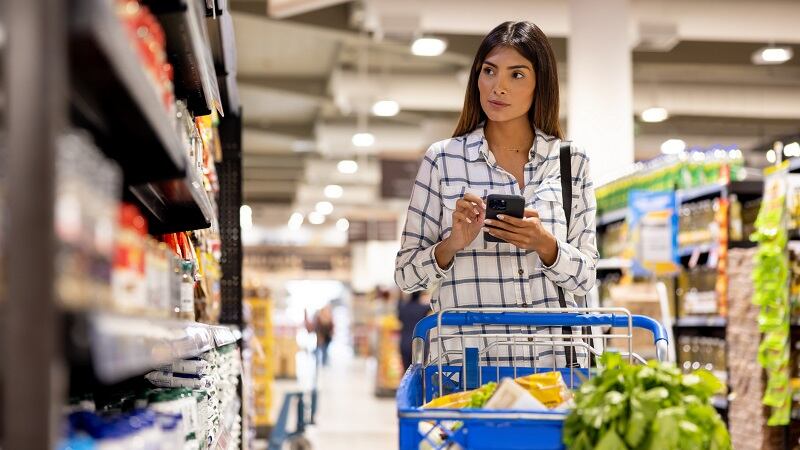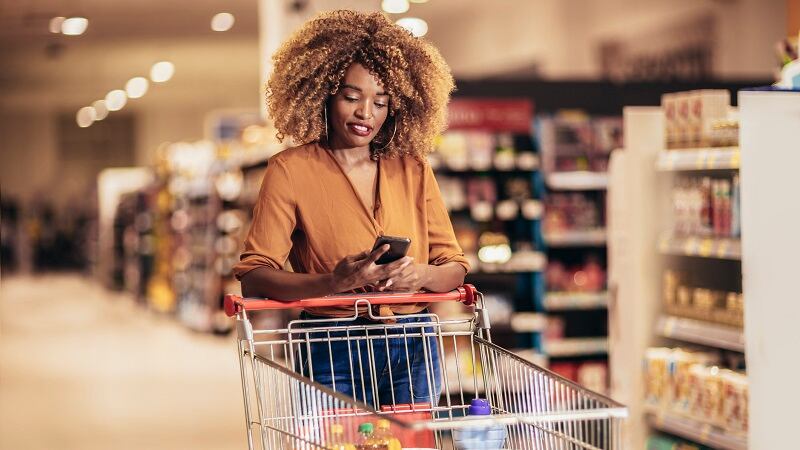Omnichannel shoppers are now omnipresent — with 93.3% of consumers purchasing foods and beverages across digital channels and brick-and-mortar stores — as retailers embrace the future of shopping with AI to provide personalized promotions, according to an FMI - The Food Industry Association and NielsenIQ (NIQ) report.
Consumers still do most of their shopping — roughly 80% — at brick-and-mortar stores, but omnichannel and pureplay online shopping are ticking up and expected to grow in the next three years.
Online sales are projected to reach $388 billion, growing by a 12% CAGR from 2024 to 2027, according to NIQ Data. Online sales will comprise 24.7% of total US omnichannel sales by the end of 2027, NIQ predicted.
Additionally, total US omnichannel sales and in-store shopping are projected to grow 2.6% and 0.1%, respectively, for the same period.
Omnichannel shoppers are split on how many items they purchase per trip, a third of shoppers buy one to three per trip, and a separate third purchase 12 or more items, according to NIQ data ending June 15. The remaining 34% purchase between four-11 items per trip.
“Our research underscores the urgency for food retailers and manufacturers to adapt to this omnichannel reality and leverage digital technologies to enhance convenience, personalization and trust. Trading partners need to meet consumers where and how they want to be met,” said Mark Baum, chief collaboration officer and senior VP of industry relations for FMI.
The consumer journey starts first online
Consumers are becoming savvier with digital shopping apps and social media to inform online and in-store purchases.
More than half (56%) of omnichannel shoppers visit retailer websites, mobile apps and social media to create shopping lists. Additionally, 35% of all consumers solely purchase items at the store without previously researching the product beforehand.
Almost half of consumers (45.8%) said they used a retailer app in store during Spring 2024, compared to 38.6% during Spring 2023. Additionally, 28.1% of shoppers used retailer apps to make their grocery lists, and 14.5% of consumers used apps to find coupons.
More than half of consumers (55%) said that they purchase groceries or household items directly from social media or live streaming platforms, according to NIQ’s Consumer Outlook survey. Social media channels like TikTok continue to gain importance for CPG brands with food and beverage accounting for 14.1% of total TikTok sales in 2024 — the second largest category.
However, TikTok’s future in the US remains in flux as major app stores like the Google Play store and Apple’s App Store do not currently list the social app, following the US Supreme Court’s decision to affirm the ban on the platform.
Retailers turn to AI to improve marketing
Retailers and food suppliers are embracing a range of technologies to improve consumer shopping experiences and provide personal recommendations, but AI adoption remains inconsistent across the board, according to NIQ data.
Most food suppliers (69%) and 41% of retailers use AI within their organization. However, only 19% of retailers use AI to optimize pricing and promotion strategies, and 22% use AI to help with assortment planning.
Retailers are using technology more broadly to make personalized marketing recommendations. Half of retailers (51%) are putting “some effort” into personalized marketing, while 41% are putting in a “significant effort,” according to FMI’s Food Retailing Industry Speaks 2024 report.





